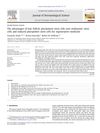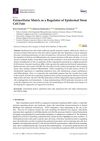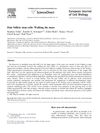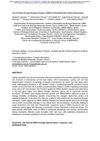The study investigated the roles of glycoproteins tenascin-C and tenascin-W in the stem cell niches of mouse whisker follicles. CD34-positive stem cells migrate from their niche to the whisker bulb, contributing to whisker shaft formation. Tenascin-C was found in the fibrous capsule, glassy membrane, and trabecular region, while tenascin-W was present in the stem cell niche, nearby trabeculae, and neural stem cell niche of hair follicles. Both glycoproteins inhibited stress fiber and focal adhesion complex formation in cultured stem cells, suggesting they promote cell migration. Additionally, tenascin-C increased stem cell proliferation in vitro, indicating that these glycoproteins may regulate stem cell migration and proliferation in whisker follicles.
 33 citations
,
October 2010 in “Journal of Dermatological Science”
33 citations
,
October 2010 in “Journal of Dermatological Science” Hair follicle stem cells are a practical and ethical option for nerve repair in regenerative medicine.
144 citations
,
June 2008 in “Cell Cycle” 14 citations
,
May 2008 in “Journal of Visualized Experiments” 3 citations
,
May 2008 in “Journal of Visualized Experiments”
 57 citations
,
March 2018 in “International Journal of Molecular Sciences”
57 citations
,
March 2018 in “International Journal of Molecular Sciences” The extracellular matrix is crucial for controlling skin stem cell behavior and health.
 15 citations
,
February 2021 in “Scientific Reports”
15 citations
,
February 2021 in “Scientific Reports” A specific group of stem cells can help regenerate hair continuously.
 165 citations
,
June 2007 in “European Journal of Cell Biology”
165 citations
,
June 2007 in “European Journal of Cell Biology” Hair follicle stem cells are key for hair and skin regeneration, can be reprogrammed, and have potential therapeutic uses, but also carry a risk of cancer.
 April 2024 in “bioRxiv (Cold Spring Harbor Laboratory)”
April 2024 in “bioRxiv (Cold Spring Harbor Laboratory)” GRK2 is essential for healthy hair follicle function, and its absence can lead to hair loss and cysts.
 136 citations
,
May 2019 in “Cells”
136 citations
,
May 2019 in “Cells” Stem cell therapy, particularly using certain types of cells, shows promise for treating hair loss by stimulating hair growth and development, but more extensive trials are needed to confirm these findings.






